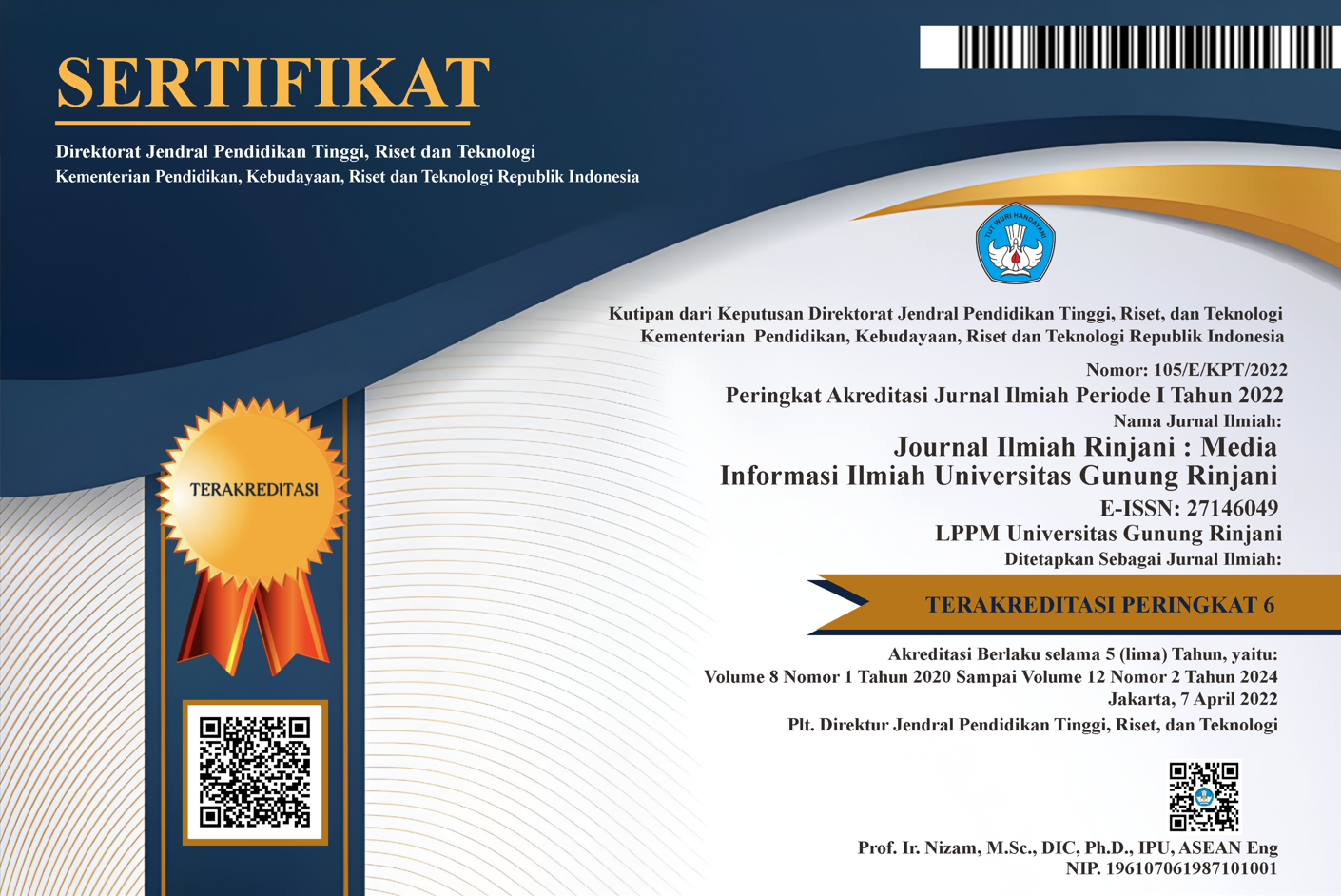DESIGNING SYLLABUS OF ENGLISH FOR TOURISM (EFT) FOR THE ELEVENTH GRADE STUDENTS OF SMA NEGERI 1 KERUAK IN THE ACADEMIC YEAR OF 2013/2014
Keywords:
Syllabus, English for Tourism, Needs Analysis.Abstract
Penelitian ini bertujuan untuk merancang silabus Bahasa Inggris Pariwisata
berdasarkan pada tingkat dan kebutuhan siswa kelas XI di SMAN 1 Keruak. Silabus
ini didisain dengan mengacu kepada silabus kurikulum 2013 dimana proses
pembelajarnnya menekankan kepada pendekatan ilmiah. Untuk merancang silabus
yang memuaskan, peneliti melakukan penelitian dan pengembangan (R&D) dengan
mengadopsi lima langkah: (1) melakukan analisis kebutuhan, (2) membuat draf
silabus (3) implementasi silabus (4) perbaikan silabus (5) merancang produk akhir.
Dalam hal metode penelitian, peneliti menggunakan metode kualitatif untuk
mengumpulkan data. Empat alat pengumpulan data, angket, wawancara, studi
documenter dan observasi, digunakan untuk mengetahui kebutuhan siswa terhadap
silabus Bahasa Inggris Pariwisata. Hasil penelitian menunjukkan bahwa mayoritas
responden menginginkan keterampilan berbicara (speaking) untuk dipelajari dalam
pelajaran Bahasa Inggris Pariwisata. Mempertimbangkan hasil penelitian tersebut,
fungsi bahasa dan belajar aktif dikembangakn dalam silabus ini. Ada dua topik
pelajaran yang dikembangkan yaitu topik yang berkaitan dengan objek wisata dan
objek lokal. Setelah membuat draf silabus, peneliti mengimplementasikan produk pad
kelas terbatas dan seluruh kelas dalam lima pertemuan. Pada akhir implementasi
timbal balik diberikan, hasilnya mengindikasikan bahwa informan memiliki pendapat
positif terhadap proses pengajaran dan pembelajaran dengan silabus tersebut. Untuk
mengetahui keberhasilan silabus, tes diberikan kepada siswa. Dari hasil tersebut
mereka memiliki peningkatan yang sigifikan dari tes pertama sampai ketiga sehingga
silabus tersebut dapat digunakan untuk pengajaran mulok Bahasa Inggris Pariwisata
untuk siswa SMAN 1 Keruak.
Kata Kunci: Silabus, Bahasa Inggris Pariwisata, Analisa Kebutuhan.
The study aims at designing a syllabus of English for Tourism based on the level and
the needs of the eleventh grade students at SMAN 1 Keruak. The syllabus was
designed based syllabus in the Curriculum 2013 where it was focused on scientific
approach. To design satisfactory syllabus, the researcher did Research and
Development (R&D) study by adopting five steps; (1) doing needs analysis (2) drafting
syllabus (3) implementing the product, (4) revising the syllabus and (5) designing the
final product. In term of research method, the researcher employed qualitative method
in gathering the data. Four data collection instruments, a questionnaire, interview,
study documentary and observation, were used to know the students’ needs in the
syllabus of English for tourism. The result of research was indicated that the most of
respondents needed speaking skill in EFT course. Considering the findings, language
functions and active learning were developed in the syllabus. There were two topics
were developed namely topic of tourism object and local object. After drafting the
syllabus, the researcher implemented the product at the restricted class and the whole
class in five meetings. At the end of the implantation a feedback was administered, the
result of which indicated that the informants had positive opinion about the teaching
and learning process by using the syllabus. To know the effectiveness of the syllabus,
tests were given to students. From the results, they had significant progress from the
first to the third test so that the syllabus was applicable to teach Mulok of English for
Tourism for SMAN 1 Keruak students.
Keywords: Syllabus, English for Tourism, Needs Analysis.











